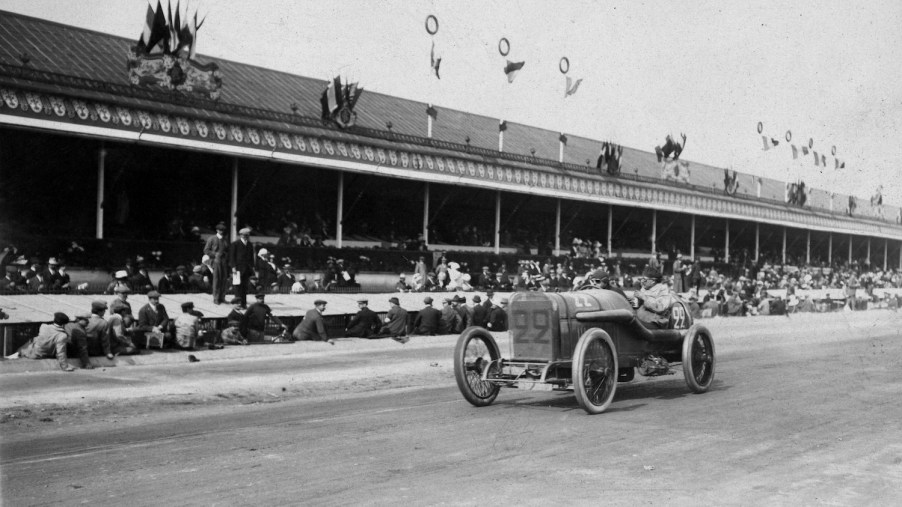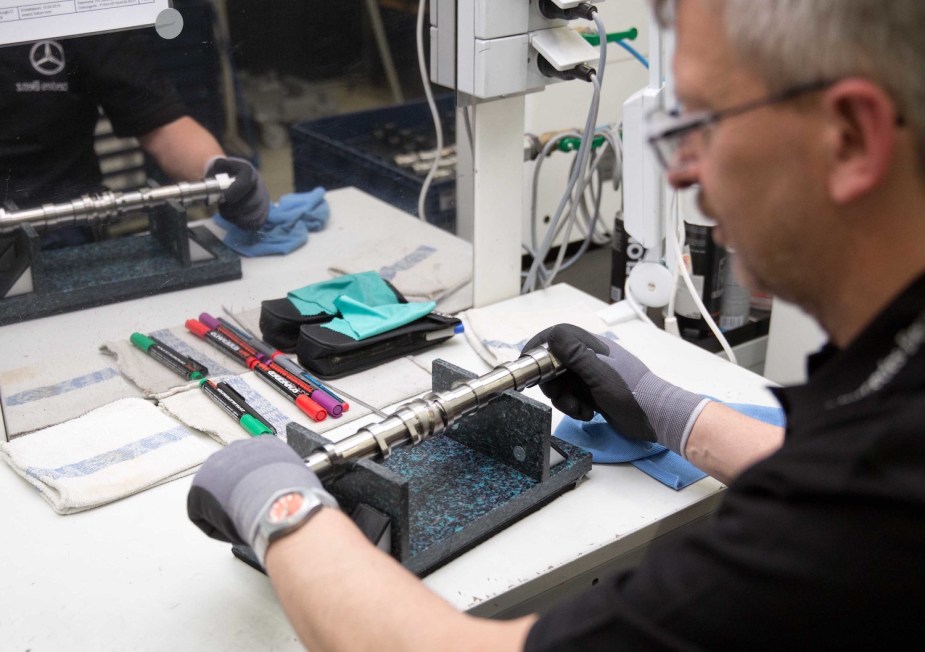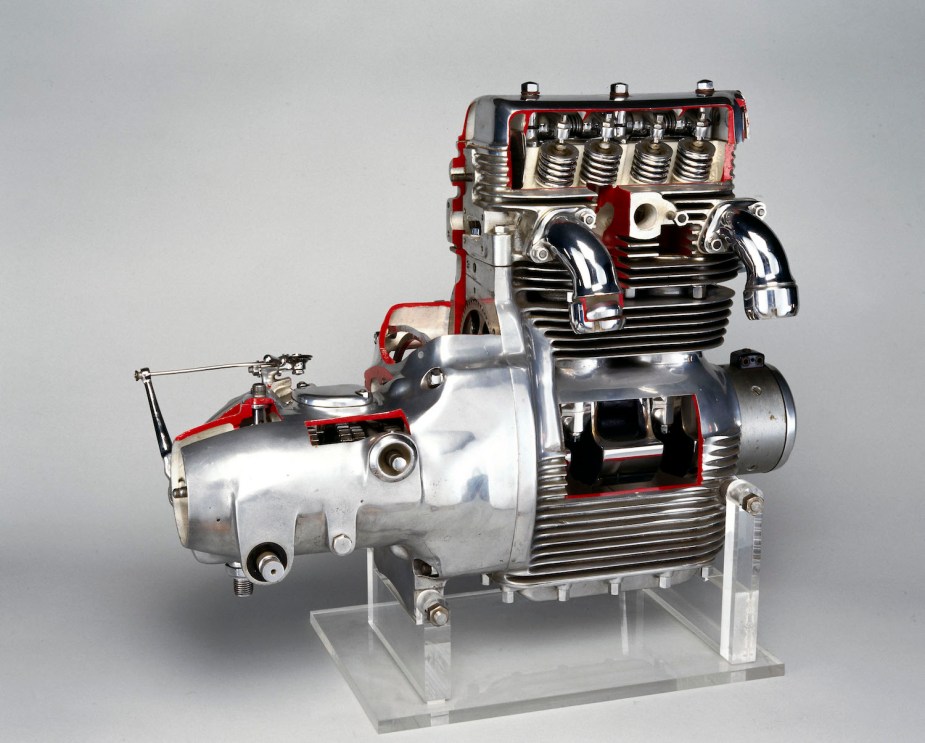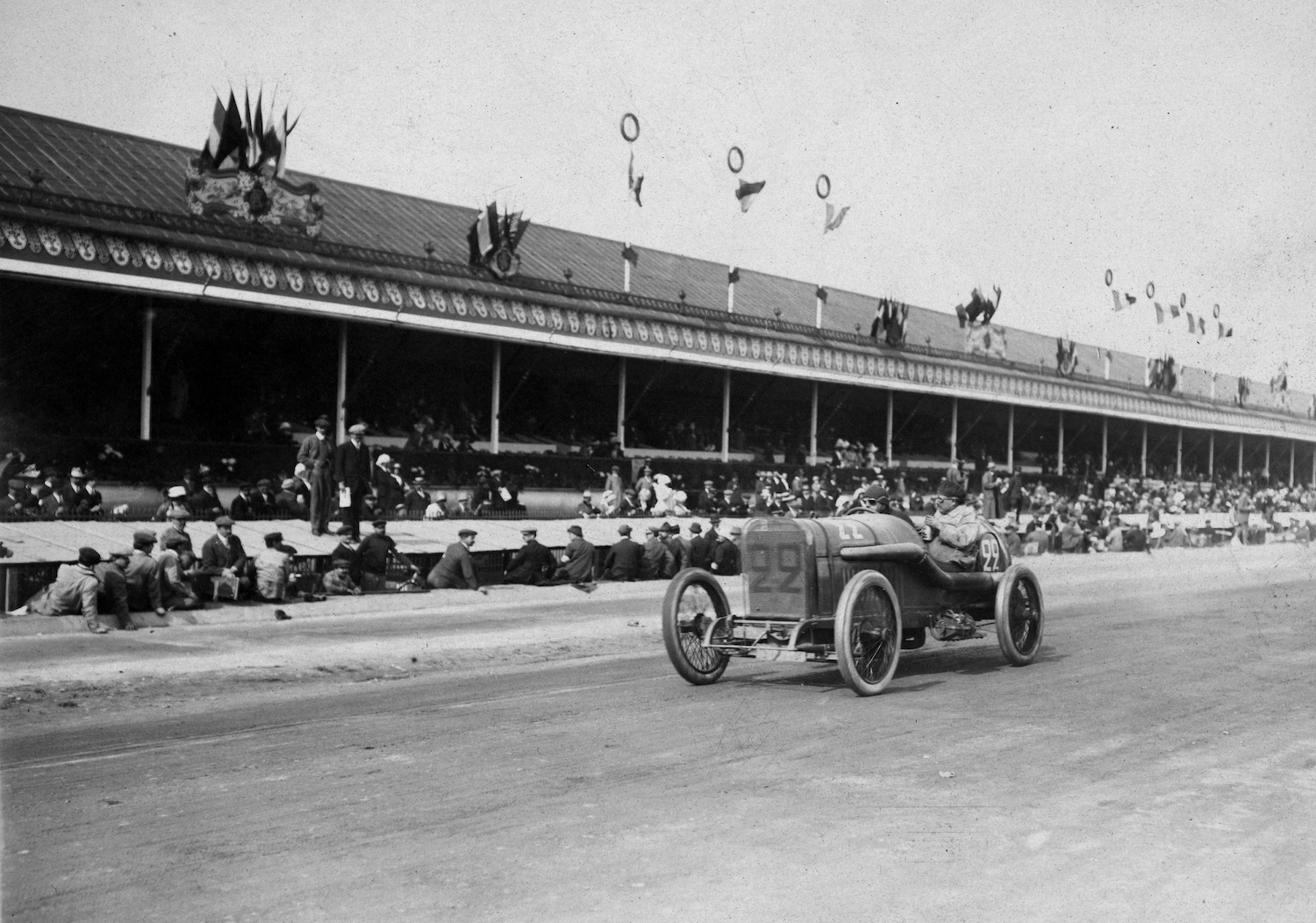
Who Invented the Double Overhead Camshaft (DOHC)?
The double overhead camshaft (DOHC) is a major performance upgrade that allows an engine to rev higher. The French manufacturer Peugeot pioneered this technology for its Peugeot race cars, way back in 1912–but it would be decades before it caught on in most cars.
What is the difference between a double overhead camshaft (DOHC) and a single overhead camshaft (SOHC)?
A SOHC engine has a single overhead camshaft atop each cylinder bank. This camshaft lifts rocker arms that then open the intake and the exhaust valves. A DOHC engine does away with these rocker arms by utilizing separate camshafts for the intake valve side and exhaust valve side of each cylinder bank.

The result of a DOHC internal combustion engine‘s separate camshafts operating the valves directly is that it can rev higher than a SOHC engine. This is because it eliminates the extra step of the rocker arm.
A DOHC does have downsides. It is a more complicated, and thus often more expensive, than a SOHC engine. A DOHC must have twice as many spinning camshafts. It also has a more complex system–a belt, chain, or gear–to drive all its camshafts off the crankshaft.
Who invented the double overhead camshaft (DOHC)?
The French automaker, Peugeot, hired Swiss engineer Ernest Henry to design a new engine for 1912. What Henry came up with was a 7.6-liter inline four-cylinder with dual overhead camshafts.

Peugeot was one of the more advanced automakers to pioneer the horseless carriage. Among Peugeot’s trailblazing features were solid rubber tires (1890) and air-filled rubber tires (1894). But by 1912, new companies such as Bugatti–with their advanced, lightweight design philosophies–were arriving on the scene.
The automaker hired a promising, 27-year-old Swiss mechanical engineer named Ernest Henry. Henry sold the company brass on a cutting-edge racecar project. He designed his project in concert with the factory racecar drivers: Jules Goux, Georges Boillot, and Paul Zuccarelli.
This team sought to design a higher revving engine capable of making more power than any contemporary engine its size. For this reason, they attempted to eliminate rocker arms with two camshafts per cylinder bank, and the DOHC was born.
Are cars with double overhead camshafts faster?
Peugeot’s early double overhead camshaft engine proved quicker than anything else on the track. Armed with the new DOHC technology, Peugeot won the 1912 French Grand Prix. In 1913, Peugeot used its DOHC engine to become the first foreign automaker ever to win the Indianapolis Grand Prix.

After WWII, most sports car manufacturers caught up with Peugeot. Other notable early DOHC engines included the Alfa Roma I4 as well as I6s from both Jaguar and Lagonda. But the gas crisis had many manufacturers reexamining traditional engine technology and downsizing engines. For automakers seeking as much horsepower per cubic inch as possible, DOHC quickly became the dominant technology–both on the track and off. Today, almost every engine you can buy features a DOHC design.
Not every modern race car uses a DOHC engine. NASCAR stock cars, for example, use a more traditional engine design. That said, NASCAR’s V8s are not engineered to be lightweight, high-revving engines.
Next read about the origins of Peugeot’s lion logo or see a deep dive into the differences between DOHC and SOHC engines in the video below:



